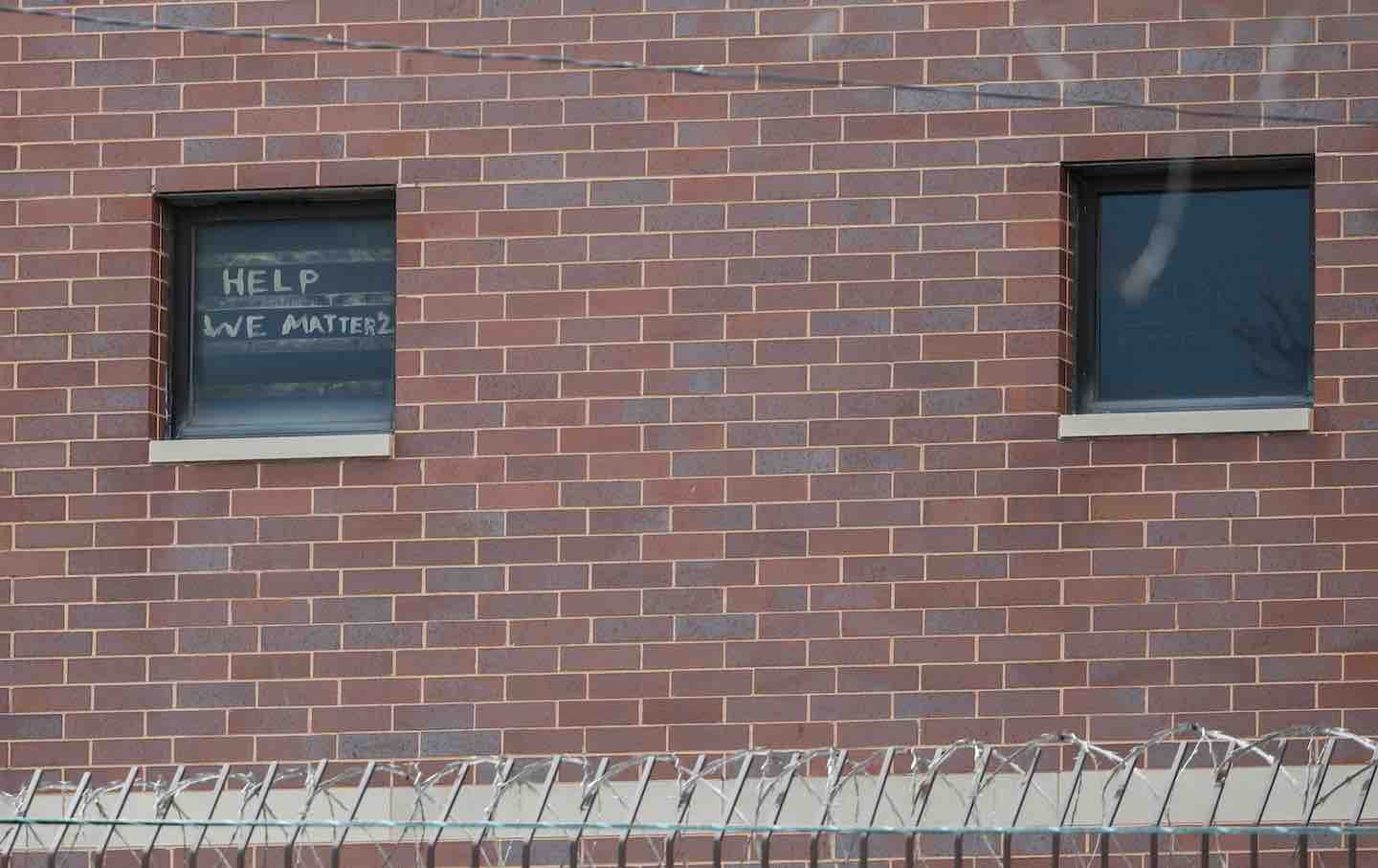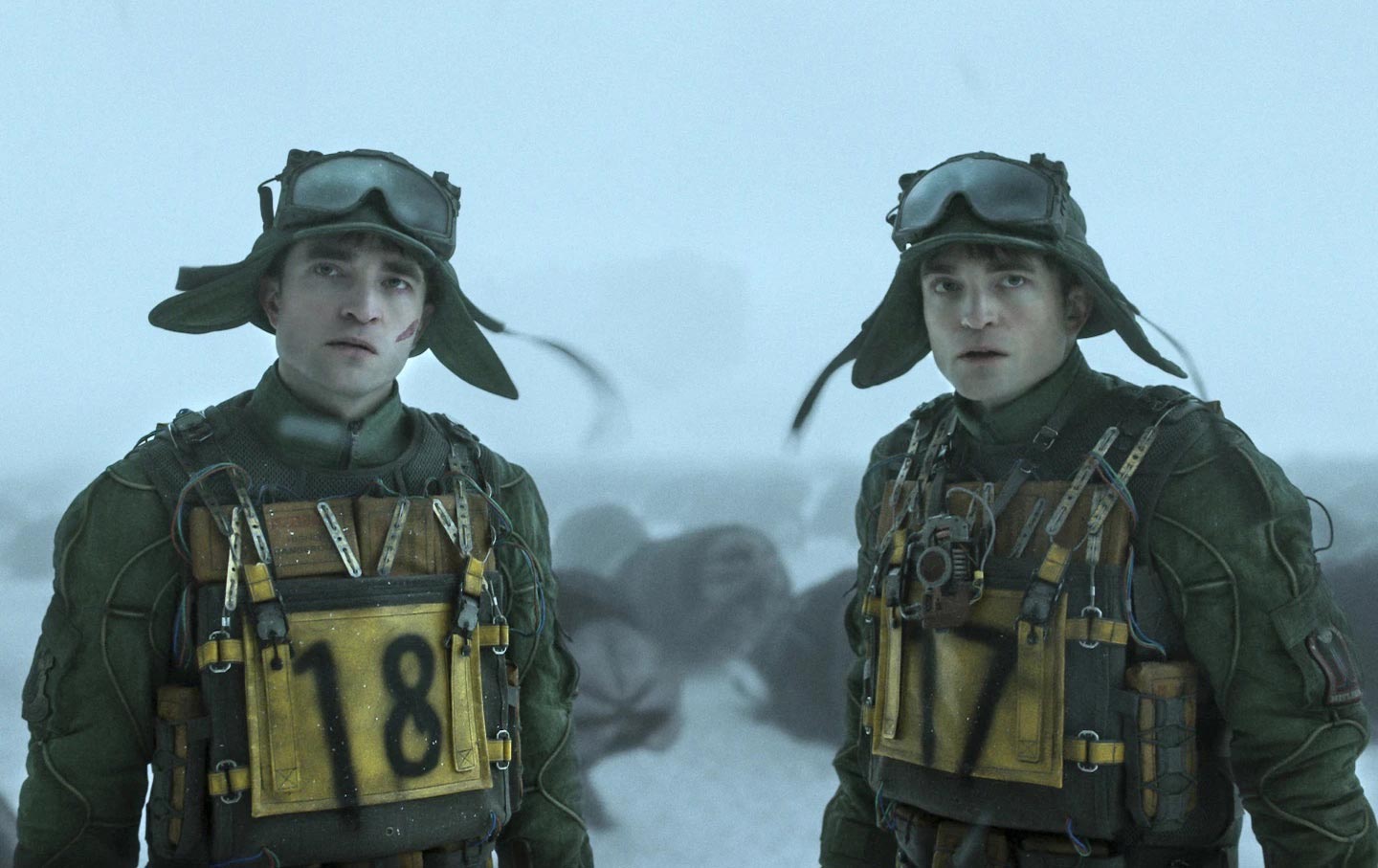Want to Fight Mass Incarceration? Start With Your Local Jail
A new collection of essays from academics and activists devoted to prison abolition focuses on the quiet but rapid expansion of the carceral system in small towns and municipalities.

The Cook County Jail in Chicago, Illinois, 2020.
(Photo by Kamil Krzaczynski / AFP via Getty Images)“How do protagonists outsmart a monster?” Ruth Wilson Gilmore asks in the foreword to The Jail Is Everywhere. “The key: a combination of curiosity and persistence.” This recent volume of essays, edited by abolition scholars Jack Norton, Lydia Pelot-Hobbs, and Judah Schept, demonstrates how these two essential weapons can be wielded against an enemy that can be found virtually everywhere—the local jail.
Books in review
The Jail Is Everywhere: Fighting the New Geography of Mass Incarceration
Buy this bookWhile the words are often used interchangeably, jails are not prisons. Prisons are facilities overseen by state and federal authorities, where people convicted of crimes are sent to serve sentences typically exceeding one year. Jails, by contrast, are operated by counties, cities, and towns, and they can range in size from county jails with a few dozen beds to vast complexes like Rikers Island in New York City and Cook County Jail in Chicago. Jails have a distinct social function: They are places where people denied bail or too poor to afford it are locked up pending the resolution of their cases, or else where people with short sentences, typically less than a year, serve their time before returning to the street.
As The Jail Is Everywhere argues, rates of jail incarceration are not simply the reflection of how many people have committed crimes. Instead, jail incarceration is the result of complex political and economic struggles at the local level. Politicians play on real or imagined increases in antisocial behavior, often using thinly veiled rhetoric about race or citizenship status to argue that locking people up is the only way to ensure communal safety. Jail boosters (like developers and “law and order” sheriffs) campaign for additional space and more resources, which when they get them increase their power and funding. Once constructed, the jail is then filled by cops, prosecutors, judges, and outside agencies, who use the jail to respond to problems like mental illness, substance abuse, and homelessness, while the institutions traditionally designated for these maladies are neglected or defunded. Soon enough, the jail space that has been constructed will be filled, necessitating, in the eyes of jail boosters, more jails to bolster a failing welfare state. An adage among anti-jail activists remains ever salient: “If you build it, they will fill it.”
The Jail Is Everywhere makes it clear that jails are also remarkably dynamic institutions that can be proposed and repurposed for a variety of local, state, and federal actors in the service of a complex web of interests, including even prison reform. To emphasize this diffuse and serpentine system, the book’s 11 case studies, mostly written by activists engaged in struggles to close jails or stop jail expansion, draw from a diverse selection of communities across the United States. In tracing this terrain and its vicissitudes, The Jail Is Everywhere challenges us to consider mass incarceration as a complex phenomenon composed of many disparate parts irreducible to any one overarching narrative, but capable of being understood nonetheless with careful study and by asking the right questions.
The editors know their way around the issue of local jails, and, often, the jail facilities themselves. Jack Norton spent years traveling the US as part of the In Our Backyards Initiative at the Vera Institute of Justice, producing over a dozen detailed assessments of how jails expanded at the local level in small counties across the nation. Norton’s work emphasizes the predatory nature of local jails and jail boosters, showing how they gobble up dwindling public funds and enable further disinvestment from other forms of social spending, while promising benefits to local economies that never seem to materialize. Lydia Pelot-Hobbs is the author of a recent book, Prison Capital: Mass Incarceration and Struggles for Abolition Democracy in Louisiana, that examines the history of mass incarceration in Louisiana as a complex phenomenon rooted in capitalist crisis, fiscal austerity, local strategies of upholding white supremacy, and movements of reform and abolition. And Judah Schept’s work looks at the intersection of the carceral state with social and environmental justice in the Midwest and Appalachia, placing an emphasis on how local jail builders can adopt a wide variety of ideological justifications to push through their plans, including rebranding jails as social welfare agencies.
The impact of the editors’ scholarship, and the relationships they built while carrying it out, are palpable throughout The Jail Is Everywhere, lending the book a groundedness and sense of communal purpose that is all too rare in academic studies of mass incarceration.
A central theme of The Jail Is Everywhere is “a quiet jail boom” unfolding in smaller cities and towns all around the country, even as the overall numbers of caged Americans, in many large cities and at the state level, continues to decline. The book demonstrates that these two phenomena are actually connected; efforts to reform state level incarceration, including the decriminalization of drugs, and a 2011 US Supreme Court case mandating California mitigate crowding in its state prison system, have had the adverse effect of filling county jails. What can be seen as a victory for prison reform, then, has been partially accomplished by siphoning people off into jails. The editors evoke scholar Reuben Jonathan Miller’s concept of “carceral devolution” as a central force here: the downward shift of custody from state to local jurisdiction.
Devolution is not unique to incarceration. This concept helps us understand how the federal government has shifted functions like social welfare down to the states, which in turn shift this responsibility down to counties and cities. Similarly, carceral devolution has led to local jail systems taking on the burden of prisoners who would previously have gone to state prison. It could surely be argued that this is an improvement, since this means the sentences are shorter, though it could also be rejoined that jails are far more miserable places to be incarcerated in than prisons, given their chaotic social environments, stemming from high prisoner turnover, and design for short-term inhabitation, leading to spartan environments with little privacy and even less to do. Not up for dispute, however, is the fact that these people are still locked up, will still likely be stuck in nightmarish bureaucracies like probation and parole, and their lives will likely continue to be defined by the reality of their involvement with the punishment system long after they have been released.
While most reforms to the punishment system are narrowly focused on tweaking the system itself, none of this occurs in a vacuum. As contributor Jasmine Heiss writes, “The small city and rural jail boom is better understood as the fallout of a fragmented social safety net, the hollowing out of industry, and a state project that has embraced carceral institutions as the only legitimate manifestation of care.” Seen in this light, as Ruth Wilson Gilmore has long argued, jails are the stopgap measure that has arisen amid high rates of unemployment and the state’s abandonment of responsibility for many social welfare functions, both of which have disproportionately impacted working-class Black and Latino communities. Far from being a remote institution removed from society—which is how counties and cities would like us to view them—jails actually tell us a whole lot about a government’s priorities, who matters and who does not.
The state regulation of immigration is an increasingly important part of this picture. In a case study from Tennessee, Silky Shah recounts the growing practice where counties that did not need extra jail space built new facilities anyway in order to lease beds to Immigration and Customs Enforcement, the US Marshals, and state correctional systems. Agencies that do not have the capacity to cage in a given area find this cheaper and easier, while existing systems find it profitable simply to add to infrastructure that already exists. These “intergovernmental agreements” underscore how malleable the jail system can be, and how carceral infrastructure, once constructed, can be used for a variety of purposes, including those completely alien to the stated intention of the jail’s builders.
Along these lines, many might expect jail construction to wrap itself in a “law and order” rhetoric, but this is not always the case. Drawing on the work of Rose Braz and James Kilgore, the book examines instances of “carceral humanism,” in which jail expansion is represented by its backers as a social good, providing much-needed services to communities abandoned by capital investment and non-carceral public sector spending. Drawing on “progressive arguments about improving conditions of confinement and enhancing people’s rehabilitation,” the editors write, “county and city officials are positioning jails as sites of care.” Jails are recast as providers of addiction services, youth programming, mental health counseling, and more. The tragic irony of carceral humanism is that many communities desperately need resources for addiction, homelessness, unemployment, and other neglected social problems—but, as many activists have asked in recent years, why do they need to come attached to a jail?
Carceral humanism has also functioned to absorb many progressive and radical critiques of mass incarceration, and put them to work arguing for the construction of new jails. James Kilgore coined the term after he and other local activists helped defeat a proposed jail in Champagne, Illinois. After their victory, Kilgore watched as the local sheriff flipped the script; returning with a new architect, “he completely changed the messaging,” Kilgore writes, “and cast us as being the villains who wanted to keep these poor folks in horrible jail cells, rather than give them a nice, soft bed to sleep on, and a big gymnasium to play basketball.” They would, of course, be the same basic jails as before. Similarly, activist Mon Mohapatra recounts two recent efforts at carceral humanism in New York City: a massive expansion of the city jail system under the guise of replacing Rikers Island with humanistic, rehabilitative “Justice Hubs,” and a more recent effort, chronicled by prison scholar Abby Cunniff, to build a “feminist jail” in Harlem.
Popular
“swipe left below to view more authors”Swipe →Each of the case studies in The Jail Is Everywhere helps emphasize in a visceral way how mass incarceration is carried out by a variety of people, often at the hyper-local level, by sheriffs, developers, and politicians in search of state and federal funds, local jobs, and capital investments. Thinking about mass incarceration in these terms allows us to demystify what is often represented as a monolithic historical process proceeding from flaws in the Constitution, the Pyrrhic victory of the civil rights movement, or the enduring legacy of white supremacism. While these are all valid lines of inquiry, it remains true that none of these abstract forces built our jails and prisons, nor was the victory of mass incarceration preordained. Individual actors worked very hard to bring this system into being. They often met resistance. And they can be defeated.
This leads to the most important aspect of The Jail Is Everywhere: the struggle against the local jail. The authors do not need to theorize or conceptualize what this struggle might look like, since most of them have experience doing it; it is one of the book’s major strengths that almost every contributor is involved in some way in boots-on-the-ground activism against jail expansion. Some have succeeded in stopping jails; others reflect poignantly on their inability to do so, bringing these lessons forward into the fights ahead. These stories reveal that jails can be resisted by remarkably small bands of activists like Decarcerate Sacramento, Programs Not Jails, Free Hearts, Communities Over Cages, Justice and Unity in the Southern Tier, and other groups that are profiled. They are by no means a homogeneous set, and represent a diversity of perspectives and tactics that can be an important resource for similar groups attempting to find their footing or think critically about their own political work.
But the main lesson of The Jail Is Everywhere is that these struggles must be part of something bigger. No sooner do activists delay or stop the construction of a jail than the jail boosters resume their efforts, often culminating in success. This need not be a cause for self-flagellation, though; at a time when the power, resources, and influence are so heavily concentrated in the hands of jail builders, it is a wonder activists ever win at all. But it does mean that resistance to jail construction must be a piece of a broader strategy of class struggle, connecting the valiant efforts of grassroots activists to create a force capable of shifting the balance of power. While this is surely easier said than done, the first step lies in understanding the complexities of how the present world is organized, and identifying places where people are already resisting.
The Jail Is Everywhere represents vital steps in this direction, while underscoring that struggles for the future are not abstract problems to be worked out on paper but concrete clashes of political will already under way.








